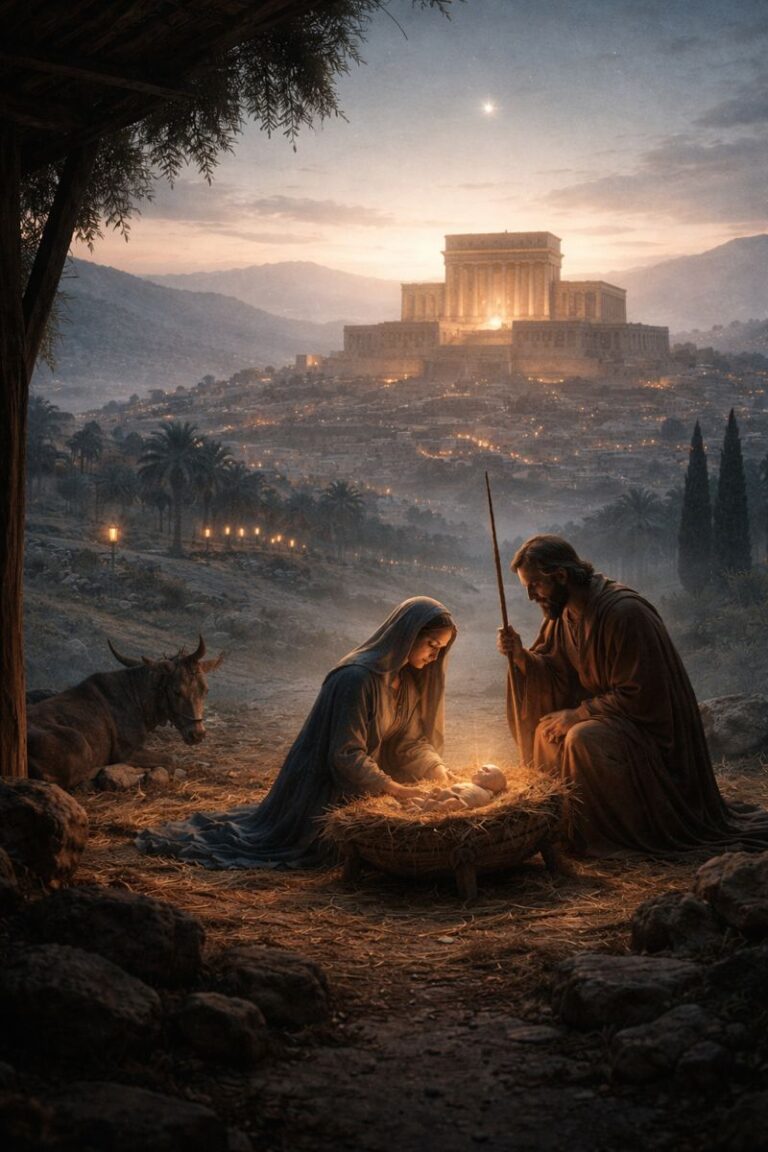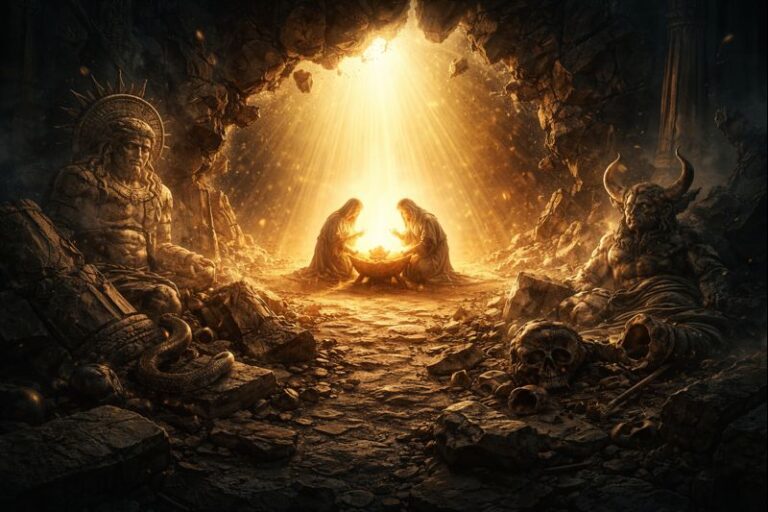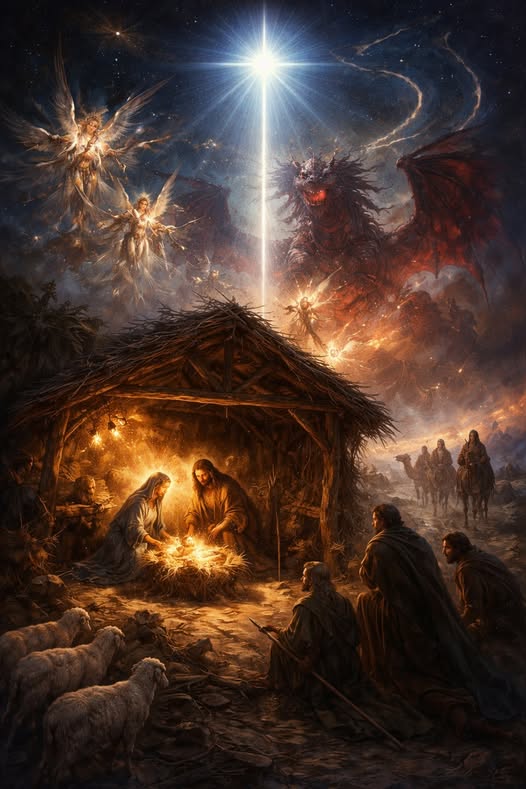
Among Jesus’ most debated prophetic statements is His declaration in the Olivet Discourse:
“This generation will not pass away until all these things take place.” (Matthew 24:34)
This verse seems difficult on the surface. Jesus had just described cosmic signs, the coming of the Son of Man, and the gathering of the elect—events commonly associated with the end of the age. Yet He appears to link them to “this generation,” which many assume refers to the group of people alive when He spoke. How can this be reconciled?
The answer lies in the biblical pattern of prophecy unfolding in layers. Known as “already but not yet,” this framework recognizes that many prophecies have both a near-term fulfillment and an ultimate one. This view allows for the destruction of Jerusalem in the first century to be the initial fulfillment, while still pointing forward to a final fulfillment during the last days.
The Near Fulfillment: The Fall of Jerusalem
The disciples asked Jesus three questions: when the Temple would be destroyed, what would be the sign of His coming, and what would signal the end of the age (Matthew 24:3). Jesus’ answer addresses all three, though not always in the same order.
In Luke 21, His words clearly describe the fall of Jerusalem in AD 70. Armies surrounding the city, people fleeing to the mountains, and great distress upon the land all point to real historical events that took place within forty years of Jesus speaking. This fulfills His warning in the immediate sense. The generation He addressed did live to see those things take place.
That judgment also marked the end of the Old Covenant system. The Temple, which stood at the heart of Jewish religious life, was destroyed, and with it, the sacrificial system. The visible end of that structure validated Jesus’ authority and His warning.
The Final Fulfillment: The Generation That Sees the End
However, other parts of the Olivet Discourse go beyond the destruction of Jerusalem. Jesus describes the sun and moon being darkened, the stars falling, and the powers of heaven being shaken. He speaks of the Son of Man coming on the clouds and the angels gathering the elect from the ends of the earth.
These signs do not fit the events of the first century. They are part of a larger eschatological picture. In this light, “this generation” can also be understood as referring to the generation that sees the final signs begin. Once those signs appear, that generation will not pass away before all is fulfilled.
This fits with Jesus’ statement just before: “When you see all these things, you know that He is near, at the very gates.” In other words, when the final cycle begins, it will move quickly. The signs of the end will not drag on for centuries. The people who witness the beginning of that period will also see its conclusion.
This understanding also fits how the Bible often uses “generation.” While the word often refers to a literal group of contemporaries, it can also describe a type of people or the group alive during a major event. In this case, it points to the final generation—the one alive when the signs of the end manifest fully.
The Reemergence of Israel and the Fig Tree
The reestablishment of the nation of Israel in 1948 is seen by many as prophetically significant, particularly in light of Jesus’ words about the fig tree in Matthew 24:32. In several Old Testament passages, the fig tree is used as a symbol for Israel. Jesus says, “When its branch becomes tender and puts out its leaves, you know that summer is near.” He immediately follows with the statement, “This generation will not pass away until all these things take place.”
In this context, the budding of the fig tree is understood to represent the revival of Israel as a nation after a long period of desolation. The generation that sees this event, often identified with Israel’s national rebirth, may be the same generation that will witness the culmination of the end-time signs. This interpretation gained prominence following Israel’s declaration of independence in 1948 and continues to serve as a key reference point in many prophetic frameworks.
Passages such as Ezekiel 37, Isaiah 66, and Zechariah 12 through 14 presuppose the existence of a national Israel in the last days. With the Jewish people once again dwelling in their land, speaking their ancient language, and reconstituted as a nation among nations, many believe the stage is now set for the final sequence of events described by Christ.
Prophetic Pattern: Already and Not Yet
The dual-fulfillment pattern is found throughout Scripture. The Day of the Lord is portrayed in Joel and quoted in Acts as being fulfilled at Pentecost, but it clearly also points to a final day of judgment. The kingdom of God is said to be among us in Luke 17, yet Jesus also tells His disciples He will not drink the fruit of the vine again until the kingdom comes in its fullness. The resurrection begins with Christ, the first fruits, but is completed when He returns and the rest are raised.
Matthew 24 fits that same pattern. There was an immediate, partial fulfillment in AD 70. But the prophecy stretches forward to a future generation that will see the full outworking. That generation will not pass away until everything Jesus described has taken place.
Conclusion
The prophecy that “this generation shall not pass” should be read as having both a near and a far fulfillment. The near was the fall of Jerusalem and the destruction of the Temple, which vindicated Jesus’ warnings and marked the end of the Old Covenant system. The far fulfillment points to the last generation—the one that will witness the beginning of the final signs and will not pass away until Christ returns and all is accomplished.
The reemergence of Israel may be the clearest marker that the final countdown has begun. If so, then the fig tree has budded, and the generation that sees it will also witness the culmination of all things. Far from being a failed prediction, this prophecy reveals the layered nature of God’s plan, linking the past and the future, judgment and hope, in a single declaration from the mouth of the Lord.
Discussion Questions
- How does the concept of “already but not yet” help us make sense of difficult prophetic passages like Matthew 24:34?
- In what ways does the destruction of the Temple in AD 70 serve as a partial fulfillment of Jesus’ prophecy, and how does that connect to the final fulfillment?
- What are the strengths and potential pitfalls of interpreting the fig tree in Matthew 24 as a symbol for modern Israel?
- How should we understand the term “generation” in light of biblical usage and prophetic context? Does it always mean a fixed number of years?
- Why is it important to avoid date-setting even when observing significant prophetic events like the rebirth of Israel? How can we remain watchful without being speculative?
Want to Know More?
George Eldon Ladd – The Blessed Hope: A Biblical Study of the Second Advent and the Rapture
Ladd, a respected New Testament scholar, offers a thorough defense of historic premillennialism. He addresses Matthew 24 in depth, arguing for a dual fulfillment—AD 70 as a partial realization and Christ’s return as the ultimate. He rejects both full preterism and dispensational date-setting, making this a balanced and foundational work.
Publisher: Eerdmans, 1956
Michael J. Vlach – He Will Reign Forever: A Biblical Theology of the Kingdom of God
This book is one of the most comprehensive biblical theologies of the kingdom available today. Vlach defends the future fulfillment of prophecies concerning Israel, including Matthew 24. He explains how Israel’s rebirth in 1948 fits within God’s unfolding prophetic timeline, particularly in relation to the fig tree parable.
Publisher: Lampion Press, 2017
R.T. France – The Gospel of Matthew (New International Commentary on the New Testament)
France gives a thorough verse-by-verse exegesis of Matthew, including careful treatment of “this generation.” While leaning toward preterist applications, he acknowledges textual tension and complexity, making his work useful even for those holding to dual fulfillment or futurist views.
Publisher: Eerdmans, 2007
Craig L. Blomberg – Matthew (New American Commentary Series)
Blomberg presents a balanced evangelical approach to Matthew 24, noting that “this generation” may apply both to Jesus’ contemporaries and a future generation. He also engages with the symbolism of the fig tree and eschatological expectations tied to Israel.
Publisher: B&H Academic, 1992
Arnold G. Fruchtenbaum – Footsteps of the Messiah: A Study of the Sequence of Prophetic Events
Written from a dispensational premillennial perspective, Fruchtenbaum’s book treats Matthew 24 in light of Israel’s role in prophecy. He defends the view that “this generation” refers to the generation that sees the prophetic signs begin, tying it closely to the reestablishment of Israel and its prophetic significance.
Publisher: Ariel Ministries, Revised Edition 2003





